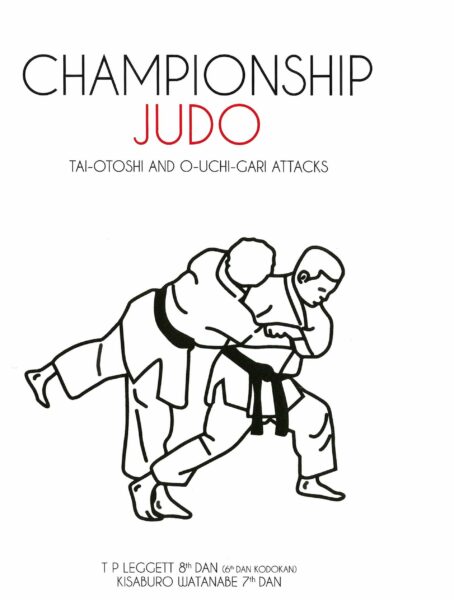Championship Judo

Book description
Written over sixty years ago, Trevor Leggett and Kisaburo Watanabe drew on their great experience of Judo, both in Japan and the West, to offer a step by step guide to Taiotoshi and Ouchigari in great detail which will be invaluable for students to develop their Judo skills. The aim is to introduce the reader to ‘general attacking movement’ using these two techniques with an approach that can be applied with some minor adaptation to most other throws
Paperback published by TLAYT
iSBN 9781911467175
Price £9.99
eBook published by TLAYT
ISBN 9781011467120
Price £5.99
Book extract
Kosoto into Taiotoshi Here the same attacking sequence is shown twice – once performed against a taller man, and once against a smaller man. You can see how very differently the throw is brought off, and this will give some idea of the richness you can find in Judo, if you study. I. – Against a Taller Man Here the attacker, being smaller, has to make use of his advantage, which is greater mobility. Just as the lion in fighting an elephant uses his speed and mobility, and does not attempt a pushing match, so when you are outweighted you must go in for lightning change of attack and direction. When I try this Kosotogari as a lead into Taiotoshi, I do not cling to the opponent’s foot, but make just the one hooking action. (When Kosoto is tried on its own, you often hang on to the opponent’s foot and make two or three attempts.) If I have judged my opponent rightly, he will whip his foot nervously out of the way. When it is in the air he is momentarily, so to say, a one-legged man, and then I have my chance. I drop my hooking foot on to the ground for an instant, somewhere in front of him, and draw up the other foot towards it or round behind it. In the same breath almost I move into the Taiotoshi. I have to get into position before he can lower his attacked foot so it is a very quick action. A good deal depends on how much I have been able to surprise him, and this is a general principle of small man’s Judo. It does not necessarily follow that I must know a tremendous number of such tricks if I am Qn the light side; even with say four, I can ring the changes on a number of alternatives and catch the opponent out regularly. All the same a small man should reckon to learn a new one at least every year; once his Judo gets stagnant he has no chance.